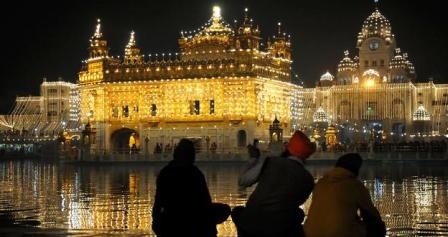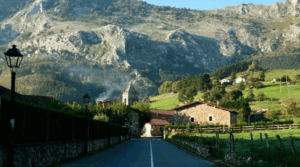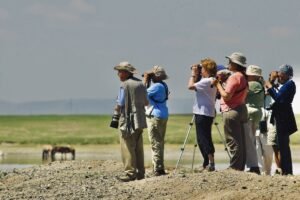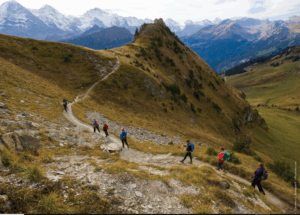10 sites of religious pilgrimage

By Suemedha Sood—–
Almost every religion in the world recognizes the spirituality of travel. In scripture, various places are given great significance for the roles they play in different belief systems. Some are the birthplaces of gods, some are thought to be gifts from the gods, some are centres of religious leadership and some are simply beautiful places to worship. These destinations, awe-inspiring even to the people in their own religion, draw pilgrims from all corners of the world each year.
Lumbini
Location: Rupandehi, Nepal
Religion: Buddhism
Significance: birthplace of the Lord Buddha
Siddhartha Gautama, who eventually became the Lord Buddha, is said to have been born in a garden in Lumbini, Nepal, in 623 BC. Siddhartha was a prince who left his palace at the age of 29 to seek enlightenment. Lumbini began attracting pilgrims after 249 BC, when the Indian emperor King Ashoka first travelled there. The Ashokan Pillar in Lumbini Garden marks the king’s pilgrimage and is inscribed with a dedication to the Buddha. Other sacred monuments include the stone slab where Siddhartha was born, housed by the Maya Devi Temple, and the pool in which Siddhartha was bathed after being born, called Puskarni.
Vatican City
Location: surrounded by Rome, Italy
Religion: Catholicism
Significance: home of the Pope and centre of the Roman Catholic Church
Vatican City, or the Holy See, became an independent state in 1929, though it has been the home of the Pope, the leader of the Catholic Church, since 1378. St Peter’s Basilica houses the tomb of the first Pope, the apostle St Peter, who was crucified and buried there. Other attractions include the Sistine Chapel, the Vatican Gardens and the Vatican Museums.
Wittenberg
Location: Saxony, Germany
Religion: Protestantism
Significance: birthplace of the Protestant Reformation
In 1517, Martin Luther challenged students and clerics in Wittenberg to a debate about the Catholic Church’s selling of indulgences in exchange for salvation. He wrote the controversial Ninety-Five Theses on the Power and Efficacy of Indulgences and nailed its pages to the door of Castle Church, an act which many regard as having launched the Protestant Reformation. Luther was excommunicated from the Catholic Church four years later.
During the Seven Years’ War, much of Wittenberg was destroyed, but Castle Church was rebuilt in the 1800s and the text of Luther’s Ninety-Five Theses was inscribed into the church’s front doors. Inside the church, Luther’s tomb is joined by the tombs of two other Protestant thinkers, Phillip Melanchthon and Frederick the Wise. Other Wittenberg attractions include Luther’s restored house; St Mary’s Church (or City Church) where Luther preached, was married, and had his children baptized; and the house of Phillip Melanchthon, Luther’s collaborator.
Mecca
Location: Makkah, Saudi Arabia
Religion: Islam
Significance: birthplace of the Prophet Muhammad
Non-Muslims are not allowed inside Mecca, the holiest place in Islam, so this excursion is only for believers. Every year, millions of Muslims embark on a journey to Mecca, called the Hajj. The pilgrimage is meant to promote unity among followers of Islam. It is so central to Islam that one of the religion’s Five Pillars is for every able-bodied adult to carry out the Hajj at least once in their lifetime, providing they can afford to. Mecca is where Muhammad, the prophet who founded Islam, was born, and where he received the first revelation of the Qur’an. Pilgrims visit the Grand Mosque in order to praise Allah before the Kaaba, Islam’s most sacred building.
Badrinath
Location: Uttarakhand, India
Religion: Hinduism
Significance: the most important site of the Char Dham, the four Hindu pilgrimage centres
Nestled within the Himalayas, Badrinath is a sacred place of the god Vishnu. Some believe that the Vyas Caves, just outside this holy town, is where the Sanskrit epic the Mahabharata was written. The area’s main attraction is Badrinath Temple, built in the 9th Century by Garhwal kings. It is primarily a place to worship Vishnu, although other gods are also represented. After visiting the temple, take a spiritual cleanse in one of the area’s natural hot springs, Tapt Kund and Surya Kund.
Golden Temple
Location: Amritsar, India
Religion: Sikhism
Significance: holiest place of worship for Sikhs
The Harmandir Sahib, or Golden Temple, is the most important gudwara, or temple, in Sikhism. It was built in the early 1600s from marble and then overlaid with gold leaf. Inside the temple, visitors can find the Guru Granth Sahib, the holy text of Sikhism. Around the temple is a body of water called the Amrit Sarovar, or Pool of Nectar. Within the temple, one impressive site is a dining hall where volunteers serve food to 3,500 people in need.
Western Wall
Location: Jerusalem, Israel
Religion: Judaism
Significance: the holiest of Jewish sites
After the First Temple had been destroyed by the Babylonians, the Second Temple (built to replace the first) was destroyed by the Romans in 70 AD. Subsequently, the remaining wall, Kotel, or Western Wall, became a place of worship and mourning for the old temples. As a result, it is often called the Wailing Wall.
Shrine of the Bab
Location: Haifa, Israel
Religion: Bahá’í Faith
Significance: mausoleum of the founder of the precursor religion to the Bahá’í Faith
The Shrine of Báb, located on Mount Carmel, combines beautiful buildings with beautiful greenery. It is the burial place of Báb, the founder of a new religion in the 1800s which broke with Islam and was therefore repressed by the Persian government. Bábism led to the birth of the Bahá’í Faith. In the shrine, meander about the Hanging Gardens of Haifa, the terraced gardens designed by Iranian architect Fariborz Sahba.
Palitana
Location: Gujarat, India
Religion: Jainism
Significance: most sacred city for Jains
In the holy city of Palitana, Shatrunjaya Hill is an important place of worship in Jainism, a belief system that revolves around non-violence toward all living things – people, animals, even insects. Shatrunjaya is a hill of steps stretching 591m high. Along the way are 863 marble Jain temples, comprising the holiest place on earth for Jainsm.
Sri Pada
Location: Sri Lanka
Religion: Buddhism, Christianity, Islam, Hinduism
Significance: religious destination for four major religious groups
Anyone in the world can appreciate the beauty of the holy mountain Sri Pada. Perhaps that is why four different religions consider the peak a sacred site worthy of pilgrimage. A rock formation near the summit takes a different shape in each belief system: Buddhists believe it is the footprint of the Buddha; Muslims believe it is the footprint of the prophet Adam; Hindus believe it is the footprint of Shiva; and, Christians believe it is the footprint of St Thomas.














